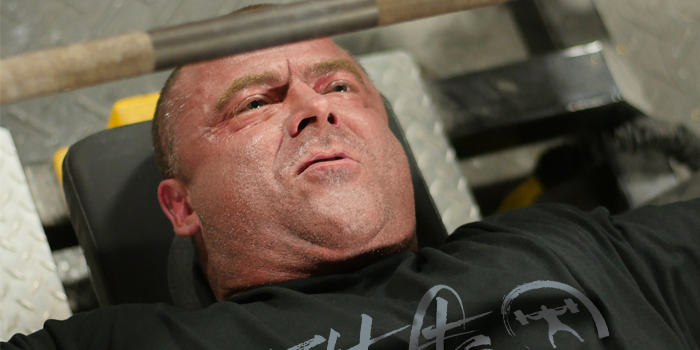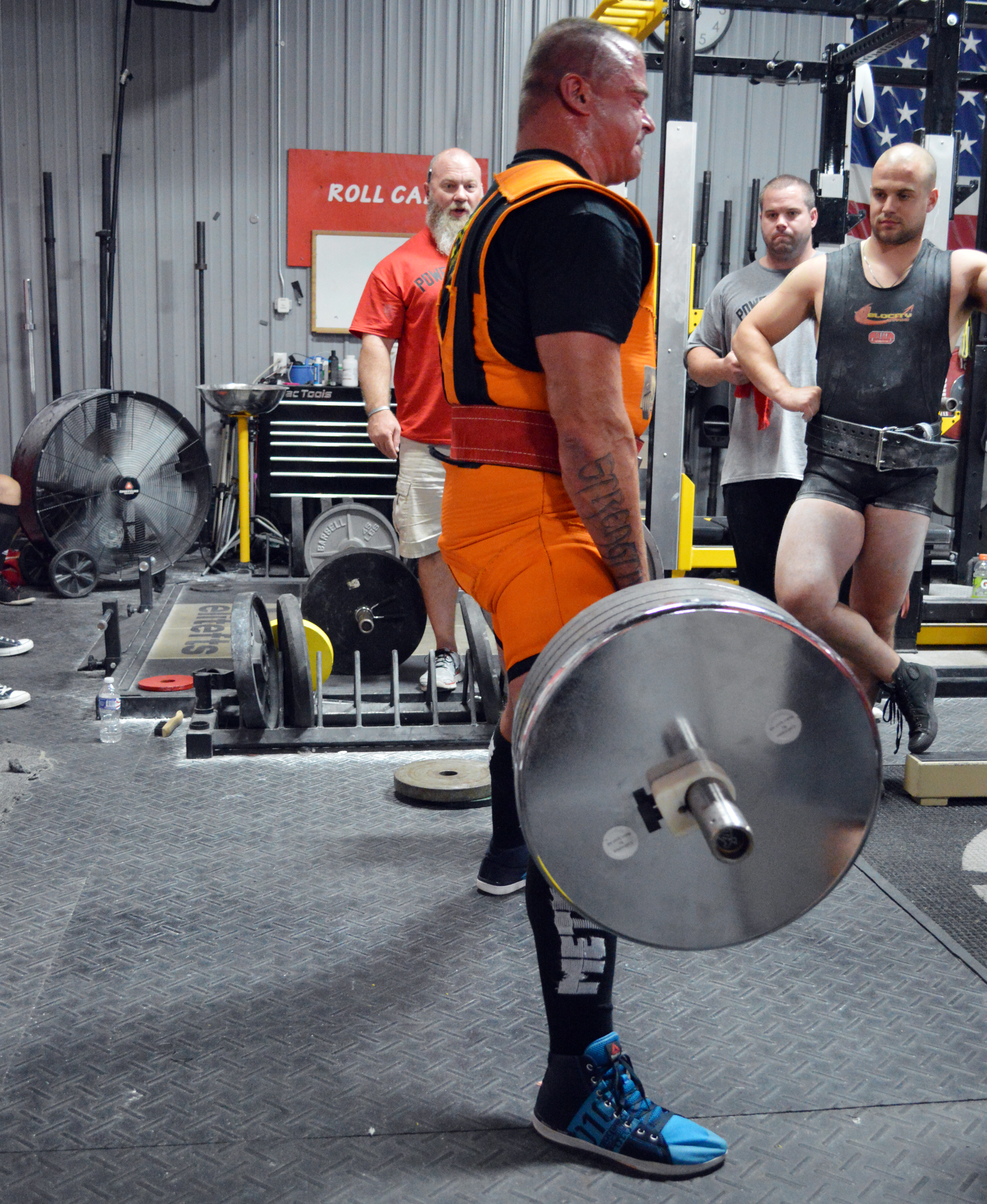
Injuries can vary in significance from simple problems like muscle spasms, bruising, strains and sprains to more serious issues like herniated discs, dislocations, and muscle tears. Whether your injury is simple, acute, or more serious, we can all pretty much agree that injuries suck.
Some simple injuries can be healed with simple rest, ice, and elevation to address the problem. However, more serious injuries may require more aggressive therapy or treatments to resolve or manage. Chiropractors, sports physicians, acupuncture, and massage therapy may be something you require on a regular basis to keep functioning properly.
In general, powerlifters are a different breed of athletes that seem to push through injuries and train partially injured on a regular basis. If you ask a powerlifter how he or she is feeling, the usual response is “I feel great” even if they have a pulled hamstring or bruised pec. They usually seem to find a way to train regardless of injury. Pain is a part of the daily routine for most powerlifters.
If you talk to somebody like Dave Tate who trained at Westside Barbell for years and competed for over a decade, you would wear out your pen and pencil trying to write down all the injuries he has experienced over his lifting career. If you put Dave Tate’s injury list up against Evil Knievel’s injury list, I’d bet it would be a draw. Having the opportunity to train with veteran lifters and talk about their previous injuries they’ve been through is a real testament to how much intestinal fortitude these guys had to continue lifting for several years. Screwed up knees, elbows, multiple surgeries, torn pecs, torn biceps, hip replacements — there’s no doubt that pushing your body to the limit on a regular basis takes a huge toll on your muscles, ligaments, joints, and tendons.
What about training with chronic pain? How do you find a way to manage your chronic injury so you can lift heavy, still make progress, and compete?
First, you have to realize that if you have a chronic injury and you’re too stubborn (like me) to give up lifting heavy or competing, chances are you’re going to have to come to the realization that you’re going to lift with some degree of pain. If that’s your plan, you have to find a way to manage your pain to a point where it can be tolerated.
I have been lifting with chronic back pain for the last eighteen months. When I compress my spine squatting I get severe stabbing pains in my mid-back when I unload the weight. It’s not so bad during the squat; it’s the decompression that triggers the pain. I experience identical pain when I unload the weight after deadlifting and the trigger point for both lifts seems to be around 400 pounds.
MORE: Managing My Injuries with Dr. Kinakin's Specialized Rehabilitation Techniques
Of course, not lifting just isn’t an option for me. I’m not ready to give up on competing either, so the only way to continue along this path is to figure out a way to make the pain manageable to continue lifting what I want to lift.
Step 1
Go through the motions of seeing your doctor, getting some X-rays, and finding out if there is a structural issue that needs to be addressed. My family doctor told me that my X-rays were “normal” and wouldn’t set up an appointment for an MRI. I was told that if my back hurt when I was lifting, just stop lifting…which wasn’t an option for me. Duh?
I had the X-rays looked at by another doctor who advised that my L1-L2 where compressed but didn’t think it looked overly serious.
Step 2
Find somebody that can help address the issue through alternative treatment methods. I spent quite a bit of time going to different clinics trying different treatments looking for some pain relief. I had tried acupuncture and ice therapy, shockwave therapy and laser therapy. Everything felt fine at the clinic, but when I got back under the bar, nothing had changed. The trigger points were the same.
I was extremely fortunate to find Dr. Ken Kinakin who was a powerlifter himself and had experience working with many different strength athletes during his career. Dr. Kinakin performed muscle testing on me to ascertain whether my muscles were engaging and firing properly. On my initial assessment almost none of the muscles in my back or abdominals were firing or engaging at all. This was problematic because when you’re bracing your abs and trying to keep everything tight during a squat and nothing is engaging properly, all the sheer stress gets put back onto your skeletal system when the muscles can’t protect it. Acupuncture, percussion, and spinal adjustment were the processes used to get my back in line and my muscles engaging properly again. Dr. Kinakin’s treatments have been really valuable in reducing the pain to a tolerable level and I visit him twice monthly to keep everything “tuned up.” In addition to seeing Dr. Kinakin on a regular basis, I foam roll my back first thing in the morning and before bed to try and keep mobility in the spine. I do my best to stretch several times a week and I have a percussor at home, which I use almost daily that loosens any tight muscles and helps keep everything working in a good range of motion. It really seems like my lifting is now 20% training and 80% pre-hab, re-hab and maintenance.
Step 3
Listen to your body, not the program. This step probably has been the biggest factor for me to keep lifting. Of course I have a program that I try to abide by with my training; however, if at anytime during the training session my back feels compromised or I’m pushing past my pain tolerance, I stop. Simple. Stopping sometimes means completely done training for the day or depending on how I feel, I may do some assistance movements that won’t stress my back, or I’ll finish up my session later in the day. Training has become very instinctual.
Back in the day I wouldn’t have stopped training no matter how much pain I was in. Now I’ve realized that the only way to continue lifting the way I want to lift is to listen to my body and abide by what it’s telling me. Some training days are better than others and some simply are short and suck.
RECENT: Virtual Existence: Are You Clark Kent, Pretending to be Superman?
Instead of getting all bent out of shape about not being able to complete some full training sessions, I look at it this way; maybe it’s better for me to split my larger training sessions into smaller sessions dividing the main lifts and accessory work. You get in the same workload, just split up into smaller segments and I can address my chronic pain issue at the same time.
As lifters, we all get hypnotized into thinking that if a session doesn’t go exactly as planned in a training template or we miss a session that somehow the program won’t work. It’s all part of the recipe for that particular program. Let’s put this in our pipe and smoke it: not everyone is going to respond the same way to the same program or the same stimulus. People have different levels of strength, different abilities to recover, different perceptions of perceived exertion, and different nutritional habits. You can have five different people of different ages, sport backgrounds and lifting abilities do the same program with the same percentages and everyone’s results will be different. You can always find a “template” for a training program but finding the actual blueprint is finding out what works best for you!
I have a good friend who competes and trains twice daily most weeks, seven days a week. He is 27 years old and can recover well enough to lift heavy a LOT. His program would kill me! I know another professional powerlifting friend who trains twice a week and is one of the strongest lifters I know. Each of these guys has found what works best for them. The secret to progressing isn’t finding what program to use; it’s finding out what works for you individually. Don’t be scared to “tweak” or make a few changes to a training program to make it fit your schedule, recovery ability, lifting strengths, and weaknesses. We’re all different and some of the changes you make may make you a better, stronger lifter.
I’m currently 50 years young and I still feel like I’ve got a lot of good miles left on this old wreck of a body. I’m hoping that if I’m diligent enough to listen to my body I will be able to continue lifting because I’m being smart about what works best for me.












4 Comments